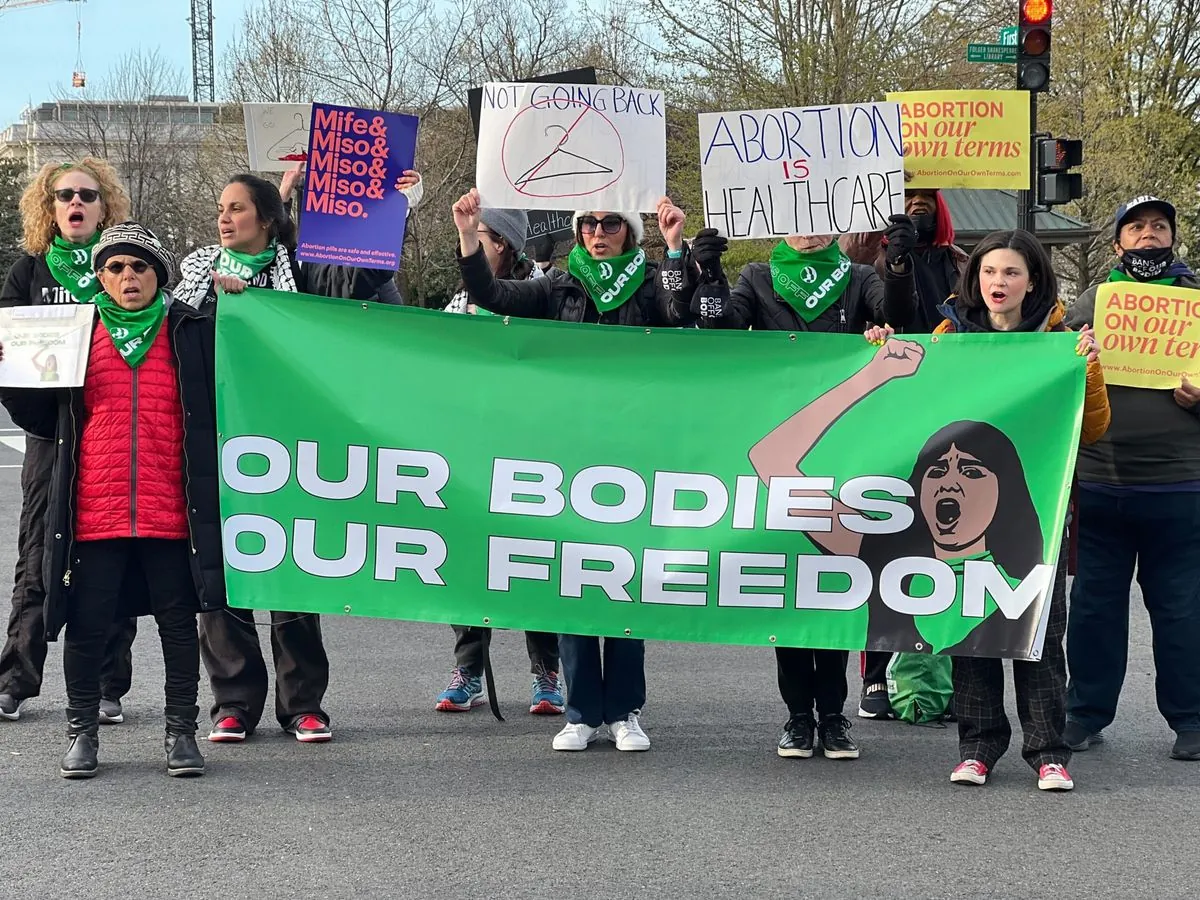Abortion Funds Face Financial Strain Amid Rising Costs and Changing Donor Landscape
Abortion funds are grappling with increased demand and travel expenses, forcing them to cap aid. Despite record budgets, organizations struggle to meet needs as "rage giving" subsides and abortion bans expand.

In the wake of significant changes to abortion access in the United States, organizations providing financial assistance for abortion care are facing unprecedented challenges. Brittany Fonteno, president and CEO of the National Abortion Federation, reports that their organization has had to reduce coverage from 50% to 30% of abortion costs for those in need, despite a record $55 million budget this year.
This shift comes as abortion funds across the country grapple with increased demand and rising travel expenses. The landscape of abortion access has dramatically changed since the Supreme Court overturned Roe v. Wade in June 2022, ending the constitutional right to abortion that had been in place since 1973. As a result, 14 states have implemented total abortion bans, with four additional states banning the procedure after approximately six weeks of pregnancy.
"We're a travel agency as much as we're an abortion fund."
The Cobalt Abortion Fund exemplifies the rapid expansion many abortion funds have undergone. In 2021, the organization spent $206,000, with only $6,000 allocated for travel costs. This year, they anticipate spending $2.2 million, with over $600,000 dedicated to travel and logistics in the first half of 2024 alone.

Despite these challenges, abortion funds have played a crucial role in maintaining access to abortion care. The expansion of these funds, along with increased access to abortion pills, has contributed to a slight rise in the number of abortions performed, even in the face of widespread bans. This underscores the importance of abortion funds, which have existed since the early 1970s and have often operated as volunteer-run organizations.
The financial strain on abortion funds is further exacerbated by the changing nature of donations. The initial surge of "rage giving" that followed the Dobbs decision has subsided, leaving many organizations to rely on more sustained but potentially reduced contributions. Joan Lamunyon Sanford, executive director of Faith Roots, notes that while some donors continue to make recurring gifts, others have shifted their support to ballot measure campaigns aimed at protecting abortion rights.
As the abortion landscape continues to evolve, funds are adapting their strategies. The Blue Ridge Abortion Fund in Virginia has had to limit its call hours for assistance requests, while the New Jersey Abortion Access Fund has increased its weekly contributions to a solidarity fund supporting out-of-state patients.
Looking ahead, the outcomes of November 2024 ballot measures in nine states could significantly impact the work of abortion funds. If passed, these measures could establish state constitutional rights to abortion, potentially easing the pressure on funds in states like Florida, Missouri, Nebraska, and South Dakota.
The ongoing challenges faced by abortion funds highlight the complex interplay between legal restrictions, healthcare access, and financial support in the realm of reproductive rights. As the situation continues to unfold, these organizations remain at the forefront of efforts to ensure access to abortion care for those in need.


































